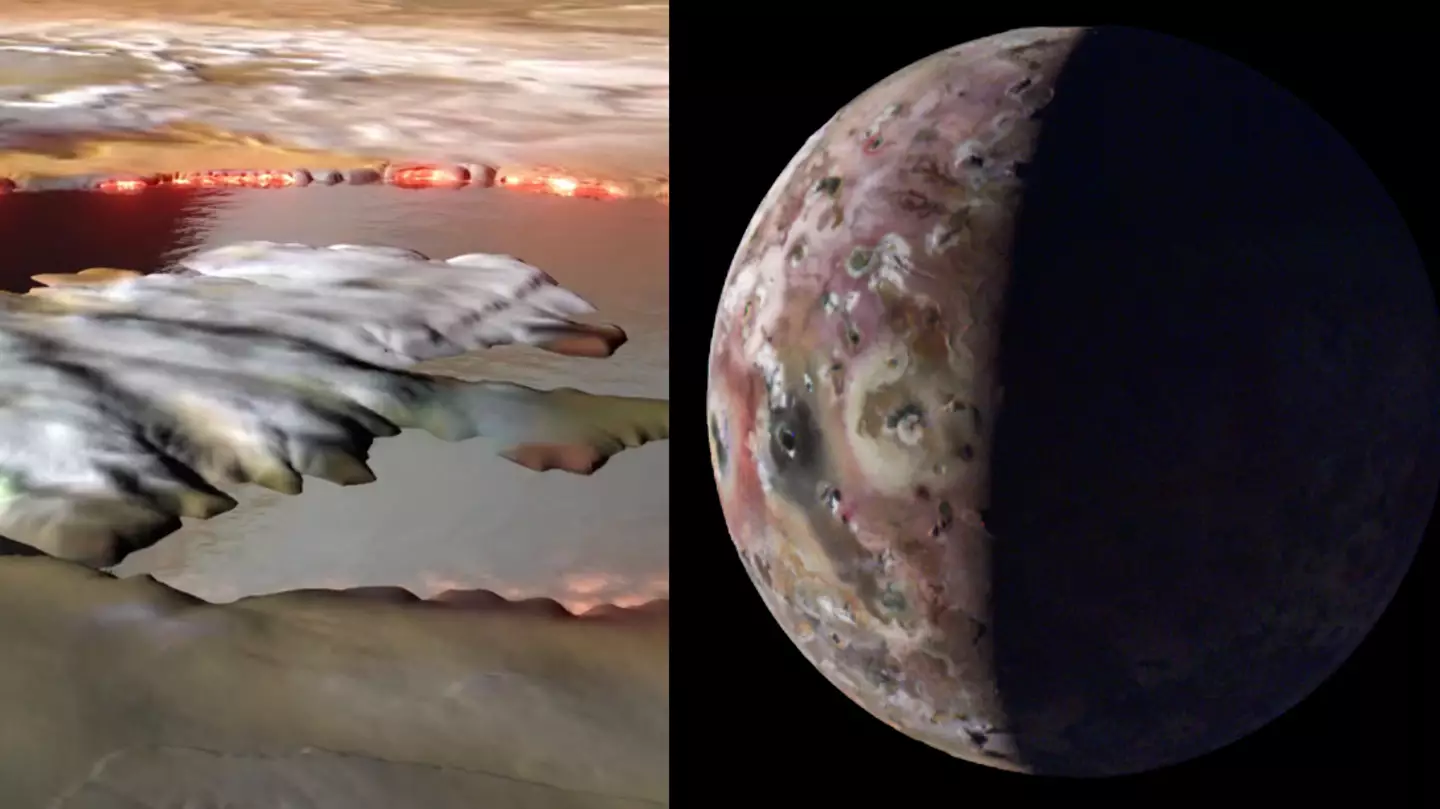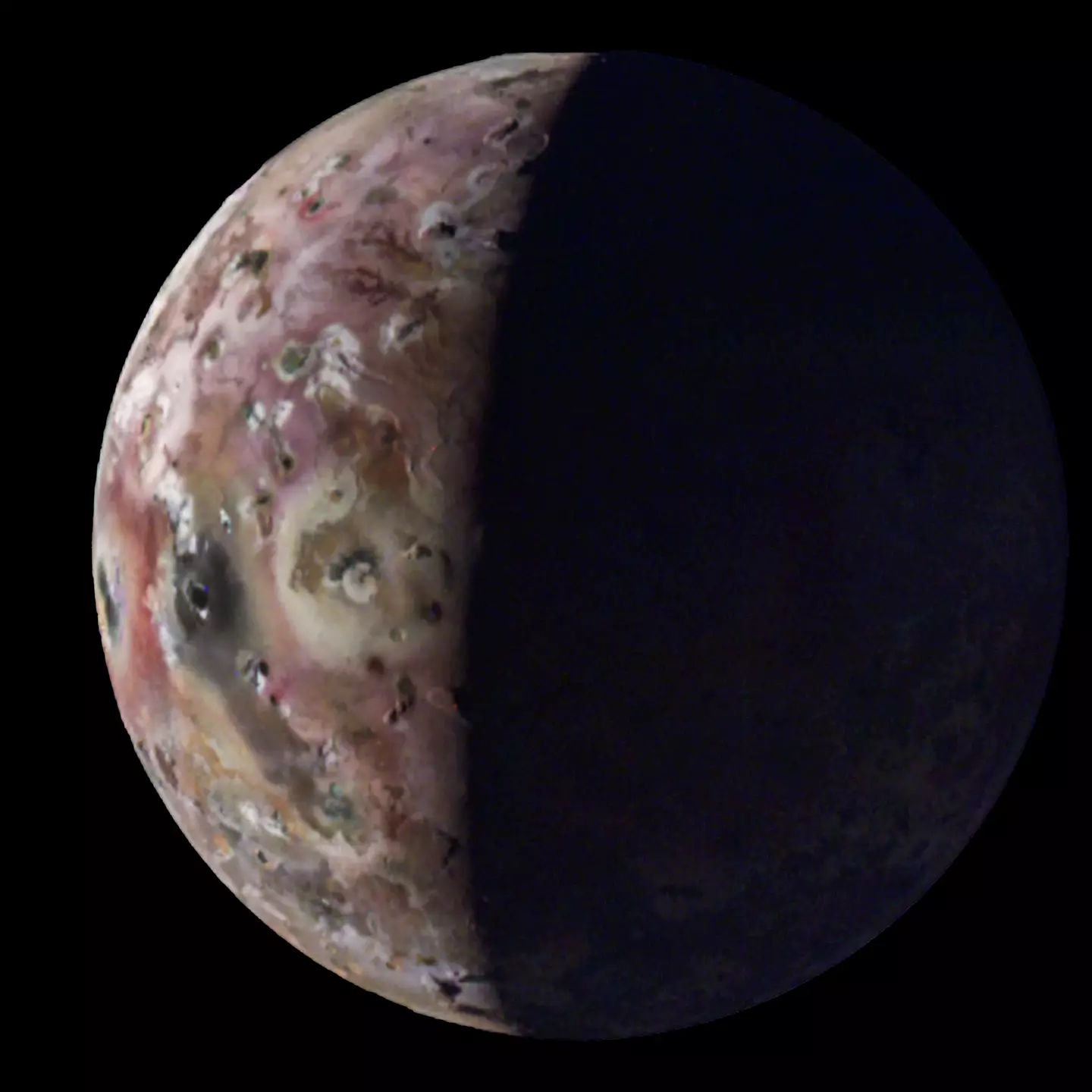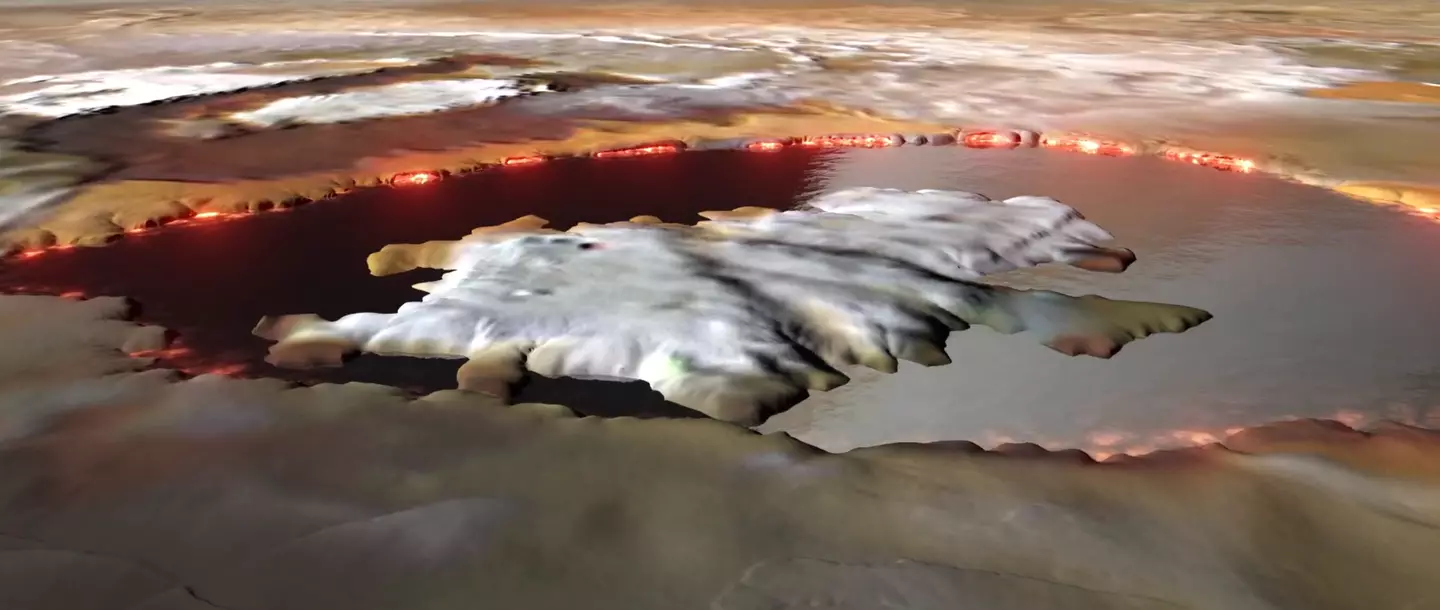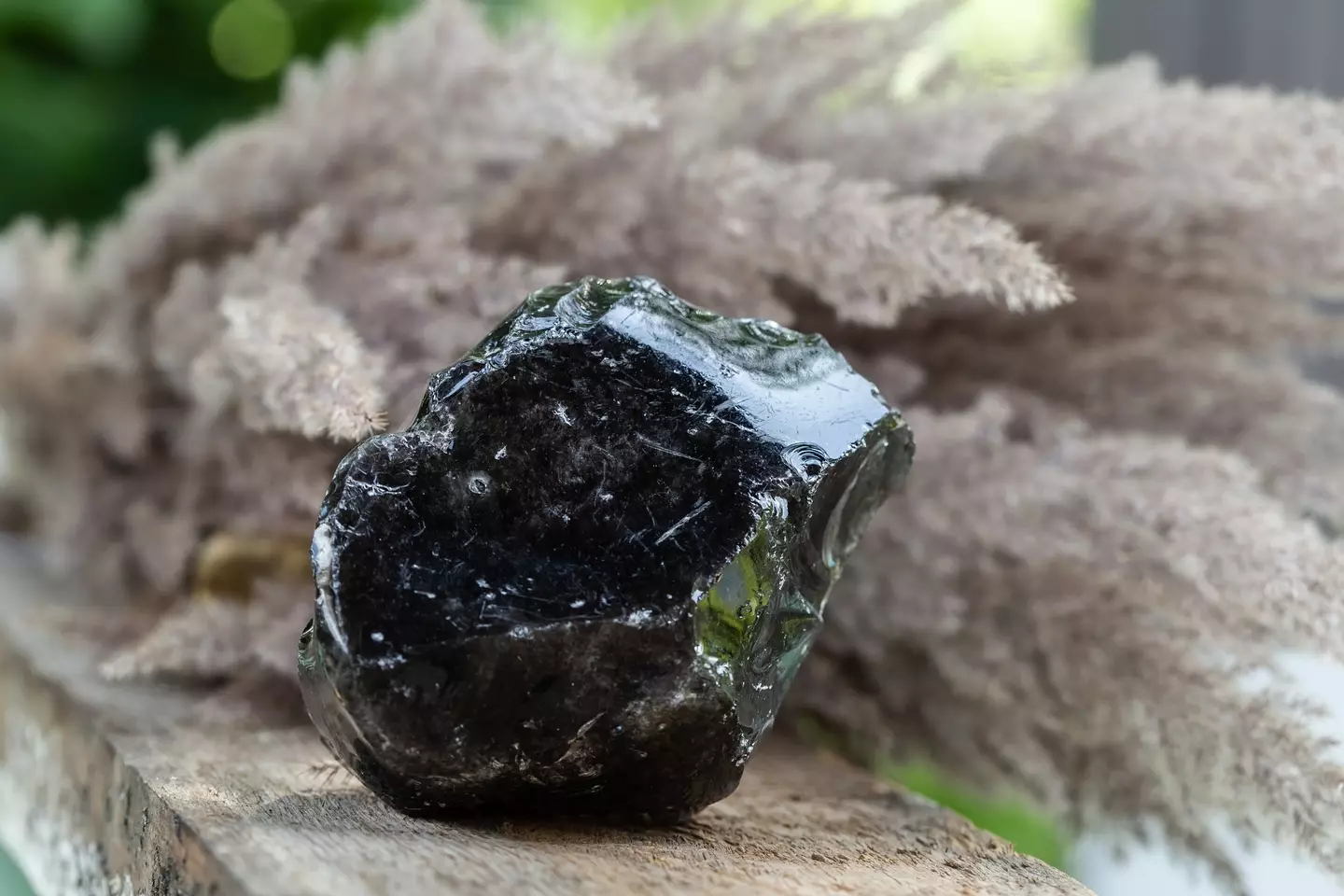
NASA has found a massive lava lake on a volcanic moon not too far away from Earth itself.
And while not on our Moon, it's as close as it gets otherwise.
The discovery was made by the $1.1 billion NASA Juno spacecraft after it carried out extremely close flybys of the Jupiter moon of Io.
Advert
And it comes as another piece of NASA space equipment, the James Webb Space Telescope, has found another supermassive black hole that's proving to be quite the hungry galactic object.
The flybys happened back in December last year, and then again in February this year.
And we're talking close flybys; less than 1,500 kilometres from the surface of moon itself.
Advert
In doing so, it's given us the first close-up images of the northern side of Io.
To put it bluntly, it's a massive volcanic rock in space.
But it has similarities to how volcanoes back here on Earth work, with some parts of Io having surfaces as smooth as glass.
This can be directly compared to when volcanoes have produced obsidian glass, which is where magma is rapidly cooled.
Advert
The lava lake in question spotted by Juno is more than 120 miles long. To put that in to context, the longest lake in the United Kingdom is Windermere in the Lake District at 11.23 miles, so it's a big old pool of molten rock.

Juno’s principal investigator, Scott Bolton, explains: "Io is simply littered with volcanoes, and we caught a few of them in action.
"We also got some great close-ups and other data on a 200-kilometre-long (127-mile-long) lava lake called Loki Patera.
Advert
"There is amazing detail showing these crazy islands embedded in the middle of a potentially magma lake rimmed with hot lava.
"The specular reflection our instruments recorded of the lake suggests parts of Io’s surface are as smooth as glass, reminiscent of volcanically created obsidian glass on Earth.”
The findings from the Juno spacecraft were published last week (16 April) and announced during a news conference at the European Geophysical Union General Assembly in Vienna, Austria.

CGI rendered footage of the lava lake has now been released by NASA, alongside new images of Jupiter's moon Io that were released this month to recognise Juno's 60th flyby of Jupiter in its 13 years in space.
Advert
As well as study Io, Juno is focusing on Jupiter and its abundance of water.
But instead of focusing on just the liquid stuff, it's set its sights on discovering the presence of oxygen and hydrogen molecules - which are the molecules that make up water - in Jupiter’s atmosphere.
Water was found on Jupiter back in 1995 through the NASA Galileo probe.

“The probe did amazing science, but its data was so far afield from our models of Jupiter’s water abundance that we considered whether the location it sampled could be an outlier. But before Juno, we couldn’t confirm,” said Bolton.
“Now, with recent results made with MWR data, we have nailed down that the water abundance near Jupiter’s equator is roughly three to four times the solar abundance when compared to hydrogen.
"This definitively demonstrates that the Galileo probe’s entry site was an anomalously dry, desert-like region.”
Featured Image Credit: NASA/JPL-Caltech/SwRI/MSSS/Gerald Eichstädt/Thomas ThomopoulosTopics: NASA, Science, Space, Technology, World News